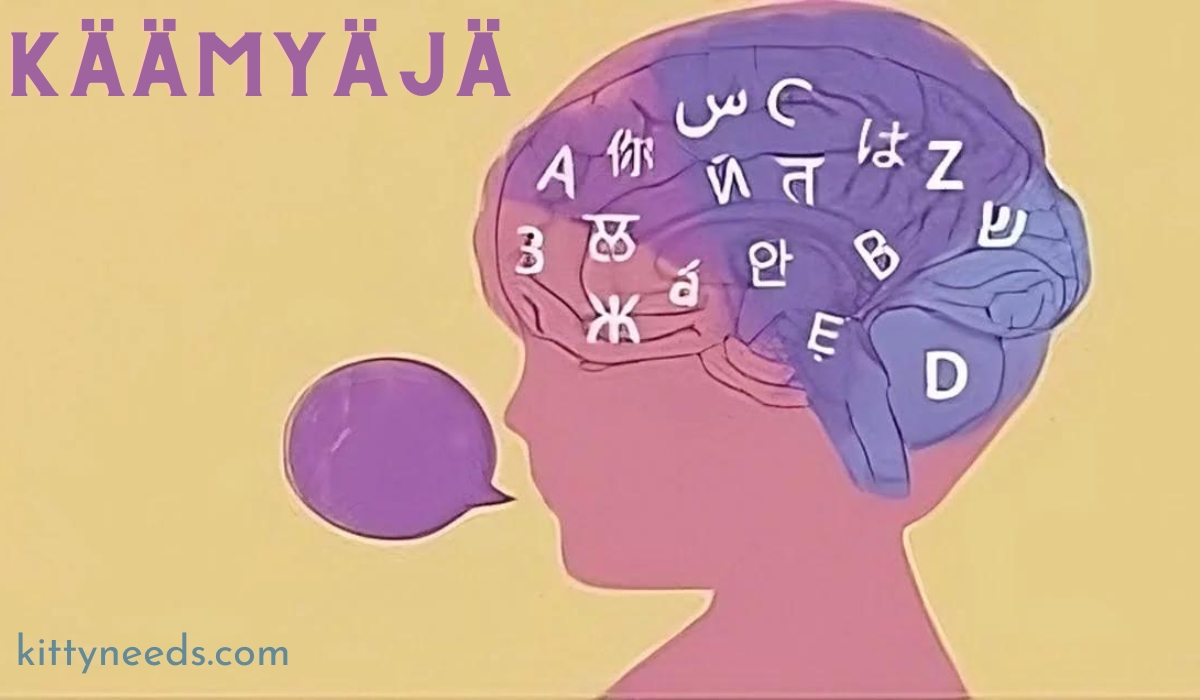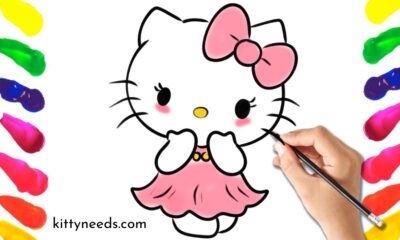Blog
Exploring The Enigmatic World Of Käämyäjä

Hidden within the lush forests and peaceful lakes of Finland lies an art form so enigmatic that it captivates the imagination with its mystery and intricacy. This art, known as käämyäjä, is more than an aesthetic craft; in the heart of the Scandinavian culture, it represents a connection to ancestral roots, a symbolic narrative, and an unyielding spirit of community. Our exploration of käämyäjä will take us on a cultural and historical journey, revealing the deep-seated significance of this Finnish art form from its origin to its place in the modern world.
The Mysterious Käämyäjä
A Legacy of Legends and Lore
Käämyäjä is an exquisite and elusive art that involves the painstaking process of bending and twisting wood to create elaborate shapes, often resembling the intricacy found in Celtic knot work. Its name, which can be loosely translated to “twists and curves,” evokes images of the winding paths through the Finnish wilderness that might have once inspired this craft. The history of käämyäjä is shrouded in the mists of time, with its beginnings rooted in the primordial folklore and mythologies of Finland.
A Cultural Gem of Finland
Embedded in the cultural tapestry of Finland, käämyäjä is considered a craft of the highest honor, reserved for the most skilled and revered artisans. The technique and artistry involved in käämyäjä are truly special, and the finished pieces—often household items, furniture, or decorative art—are treasures to be passed down through generations. Beyond its aesthetic appeal, käämyäjä embodies the Finnish ethos, a celebration of nature and the ingenuity born of necessity.
The Spirit of Käämyäjä
Crafted by Tradition
The roots of käämyäjä reach deep into the soil of Finnish tradition. It is said that the practice originates in the ancient rituals and ceremonies of the indigenous Sami people, where items were crafted from the twisted birch as a symbol of spiritual significance and communal celebration. The craft is inherently entwined with the Finnish value of sustainability, using natural resources in harmony with the environment.
Symbolism in Every Curve
Each twist and turn of käämyäjä tells a story. Its designs are not random; they are deliberate and steeped in meaning. The interconnected patterns speak to the cycle of life, the interdependence of the elements, and the strength found in unity. The final products are a testament to the Finnish way of life, where every object holds a deeper resonance and every tradition continues to breathe in the modern day.
The Evolution of Käämyäjä
From Log Rafts to Living Rooms
Käämyäjä may have its origin in the necessities of the past, but its evolution is testament to the enduring relevance of cultural identity. Once used for practical purposes, such as crafting the handles of tools or the legs of stools, käämyäjä is now cherished as works of art to adorn modern homes. The transition of käämyäjä from a utilitarian craft to a form of high art is a story of perseverance, adaptation, and the strength to endure.
A Beacon of Tradition Illuminated by Innovation
While käämyäjä is firmly rooted in the past, it also stretches forward, bridging the gap between tradition and modernity. Contemporary artists are taking up the tools of their forebears, reinterpreting the craft, and infusing new life into its ancient forms. Käämyäjä serves as a beacon, guiding Finns to respect their heritage even as they move confidently into an uncertain future.
Käämyäjä Today
In The Lithesome Grasp of the Modern Art World
Today, käämyäjä enjoys a resurgence. Artisans and enthusiasts are finding new ways to express käämyäjä in a modern context, creating exhibitions, workshops, and festivals that celebrate this remarkable art form. The global community is beginning to recognize the value of käämyäjä, and its allure is spreading beyond the borders of Finland, attracting those who seek to partake in its mystique.
A Craft that Bends and Bows, But Never Breaks
In an era where time-honored customs can fray in the face of modern convenience, käämyäjä stands tall as a symbol of resilience. It is a living testament to the Finnish people’s enduring commitment to their heritage, and their ability to ensure that tradition remains dynamic and relevant. For those who practice it, and for those who admire it from afar, käämyäjä is a touchstone of identity and community.
The Allure of Käämyäjä
A Taste of Timeless Elegance
What makes käämyäjä so alluring? Perhaps it’s the timeless elegance of its designs, or the undeniable skill required to create them. Maybe it’s the narrative woven into each piece, or the way it reflects the Finnish sensibility and spirit. Whatever the reason, to experience käämyäjä is to step into a world that is at once ancient and new, rekindling an appreciation for the unseen beauty that surrounds us.
YOU MAY ALSO LIKE
Integremos | Tech Solutions: Navigating the Waves of Innovation
Where to Discover More
For those entranced by the tale of käämyäjä, the next step is to experience it for oneself. Finland’s many cultural centers and museums offer a window into the world of käämyäjä, and workshops with skilled craftsmen provide the opportunity to try one’s hand at this venerable art form. Encouraging curious travelers and local enthusiasts to explore the depths of käämyäjä will only serve to enrich their understanding of Finnish culture and history.
In untangling the enigma of käämyäjä, we have not merely unearthed an art form, but a touchstone of Finnish identity. What began as a functional craft has blossomed into an iconic symbol of a nation’s past, present, and future. Käämyäjä invites both Finns and the global community to share in its beauty, to preserve and value its heritage, and to ponder the deeper meanings that twist and turn through its timeworn history.
Frequently Asked Questions
What is käämyäjä?
Käämyäjä is a traditional Finnish craft characterized by its intricate designs resembling the complexity and intricacy found in Celtic knotwork. The term “käämyäjä” translates to “twists and curves,” which is reflective of its stylistic essence and the natural inspiration drawn from the Finnish landscape. This art form is deeply embedded in Finnish culture and is considered an emblem of skill and heritage, practiced by highly revered artisans.
How is käämyäjä made?
Käämyäjä art is created through a painstaking process that involves twisting and weaving materials, often wood or metal, into elaborate, interconnected patterns. The process requires a high level of craftsmanship and precision, as each curve and twist carries symbolic meanings and contributes to the overall story depicted in the piece. The techniques used have been passed down through generations, blending tradition with personal innovation by each artist.
What does käämyäjä symbolize?
The symbolic representation of käämyäjä is profound, with each design embodying themes of nature, the cycle of life, unity, and endurance. The interwoven patterns reflect the interconnectedness of all elements and the cyclic nature of life. Käämyäjä serves as a reminder of the balance between humans and nature, the strength found in community, and the resilience of tradition over time.
Where can I see käämyäjä art?
Käämyäjä art can be viewed in various cultural centers and museums throughout Finland. Additionally, several modern käämyäjä exhibitions, workshops, and festivals celebrate this unique art form, allowing both locals and tourists to immerse themselves in its beauty and complexity. These events provide opportunities for enthusiasts to learn about käämyäjä’s rich history and its significance in Finnish culture.
Can I learn to make käämyäjä?
Yes, it is possible to learn the art of käämyäjä. There are workshops offered by skilled craftspeople dedicated to passing on the tradition of käämyäjä to new generations. These workshops are designed for various skill levels, from beginners to more advanced artisans, and provide hands-on experience in creating käämyäjä pieces. Engaging in these workshops not only helps preserve the craft but also allows individuals to connect personally with Finnish culture and history.

-

 Pets and Animals7 months ago
Pets and Animals7 months agoShovel Dog: Everything You Need to Know
-

 Pets and Animals7 months ago
Pets and Animals7 months agoHow To Trim Dog Nails: A Step-by-Step Guide for Painless Pups and Peace of Mind
-

 Pets and Animals7 months ago
Pets and Animals7 months agoHow Often Do You Take A Cat to the Vet? A Guide for Caring Owners
-

 Pet Care Guides7 months ago
Pet Care Guides7 months agoGive a Loving Home: Adopt a Pet, Change a Life with Pet finder
-

 Other7 months ago
Other7 months agoHow to Hello kitty drawing: A Step-by-Step Guide for Fans of All Ages
-

 Pets and Animals7 months ago
Pets and Animals7 months agoBubonic Plague case oregon cat: A Modern Tale of Medieval Disease
-

 Pet Care Guides7 months ago
Pet Care Guides7 months agoThe Definitive Guide to Rimadyl Carprofen Dogs: Uses, Dosage, and Safety
-

 Pet Care Guides7 months ago
Pet Care Guides7 months agoHere’s Why Nationwide Pet Insurance Should Be on Your Radar